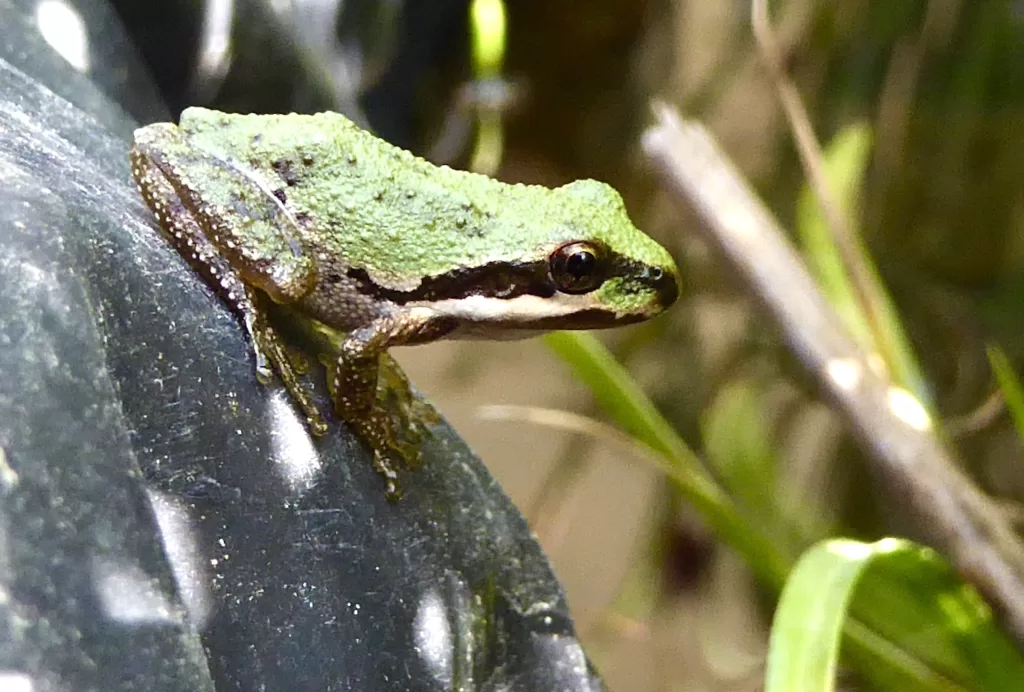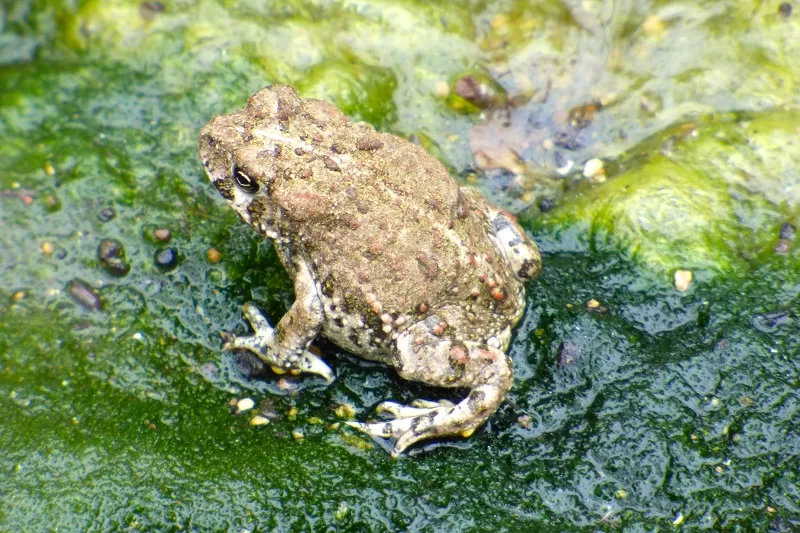
The record rain California received in January is a boon for the Western toad, Anaxyrus borea (California has its own subspecies, Anaxyrus borea halophilus). This native amphibian is listed as near threatened in many areas. In the Santa Monica Mountains National Recreation Area it is a park species of special concern. Western toads are struggling throughout their range, which includes much of the Western U.S., with a host of problems that include habitat loss, years of drought conditions, water pollution, habitat fragmentation, vehicle strikes, and an influx of invasive species, like the rapacious red crawfish that eats everything it encounters, including all sorts of native amphibians.
The last good year for the Western toad in the Santa Monica Mountains was 2019, but this is a long-lived species. Toads that survive to adulthood can live for as long as a decade, giving them at least some flexibility to weather periods of drought. When conditions are right to successfully breed, toads have to move fast.
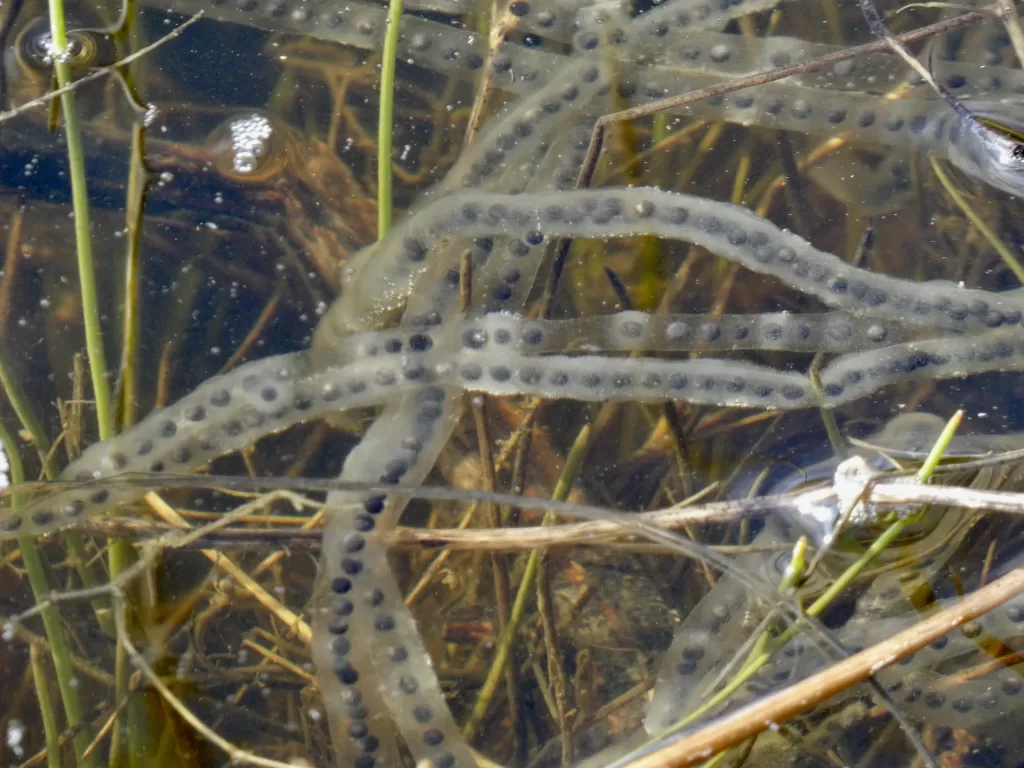
A single female Western toad produces thousands of eggs at a time—estimates range from 5,000 to 20,000. The eggs resemble a string of small black beads. They are encased in a jelly-like substance that protects the eggs, anchors them to vegetation or rocks, and ensures that they float. Many native amphibians, including the California newt and the recently reintroduced red-legged frog, require clear, deep pools to successfully reproduce. Western toads prefer shallower water. Vernal pools, and the edges of flooded creeks or ponds are ideal toad habitat, but the shallow water can leave the eggs exposed. Depending on conditions, it can take up to ten days for the eggs to hatch into tadpoles in approximately ten days, and that period can be a race against time as the water source dries up.
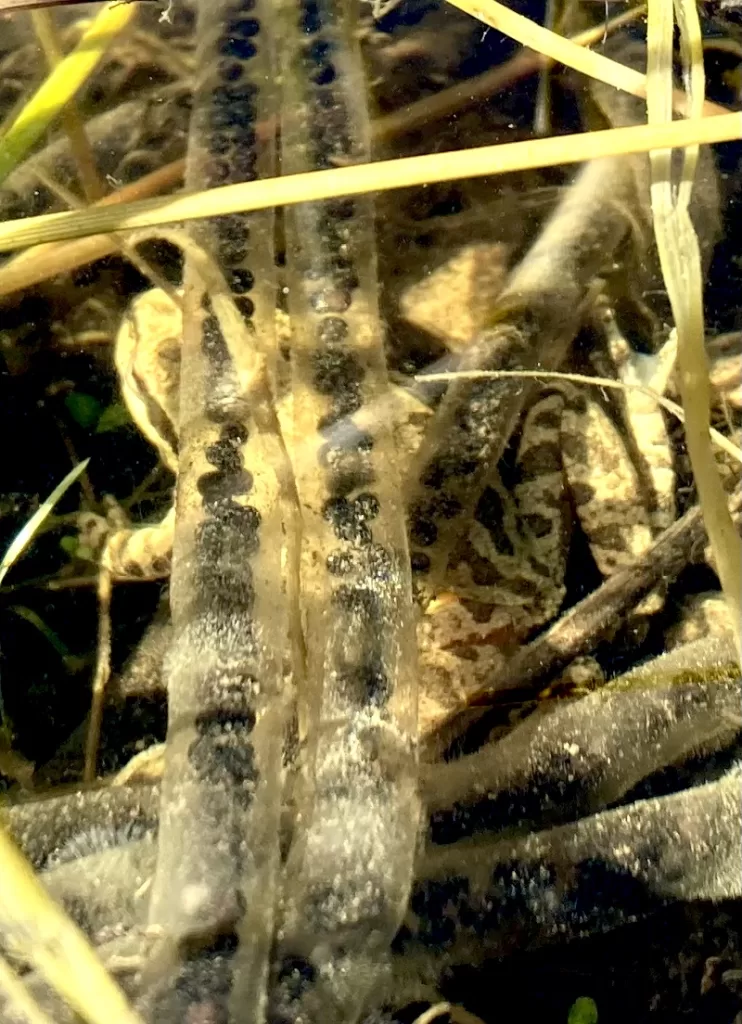
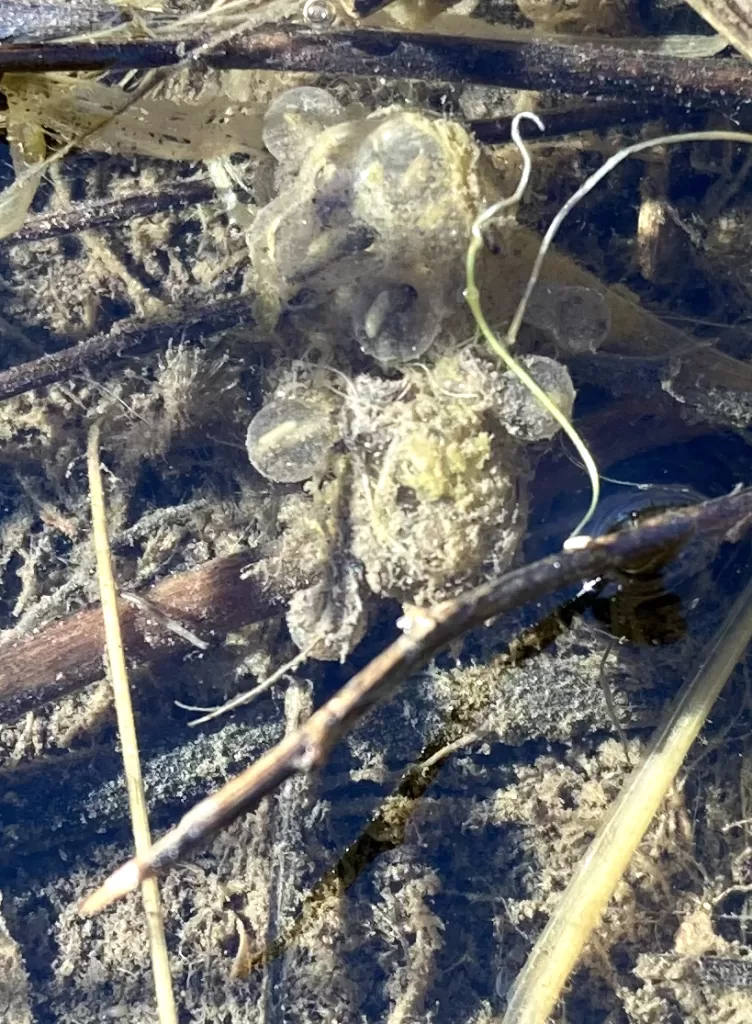
Once the tadpoles have hatched they face a host of additional hazards, that include predation and the potential for their pond to dry out before they mature to the point where they can live on land. It takes about a month for the tadpoles to transform: growing legs and lungs, and eventually emerging from the water as juvenile toads.
Western toads can grow to be more than five inches long, making them one of the Santa Monica Mountains’ largest amphibians.
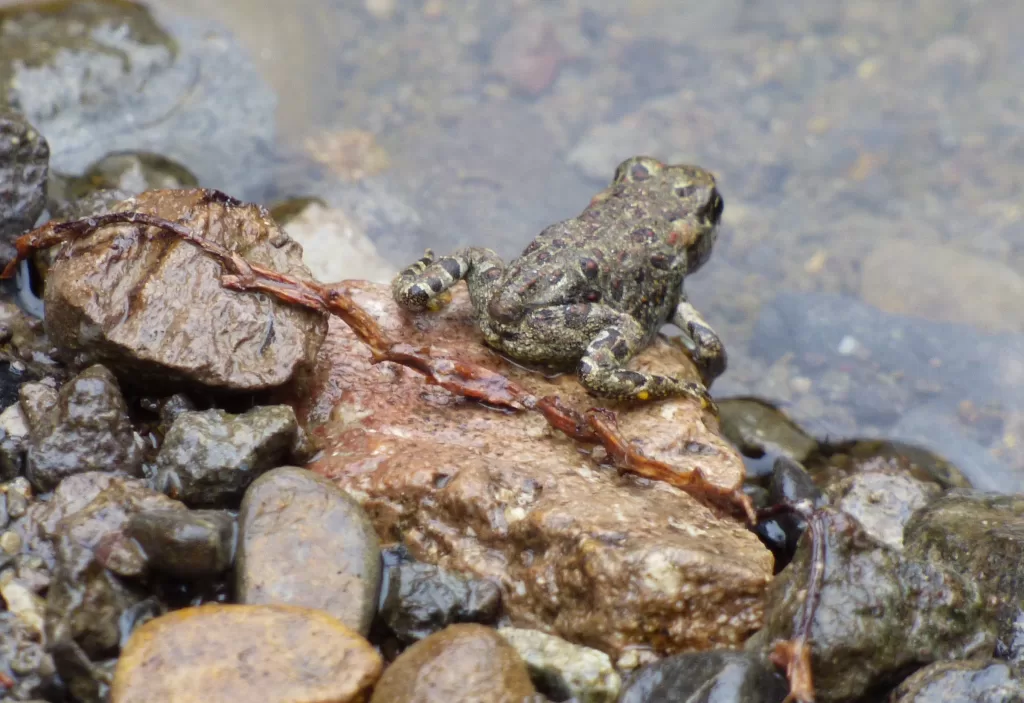
Mature Western toads have a distinctive white line down their backs. They range from tan to greenish-brown and often have colorful reddish patches. Like all toads, they have a round bump on each side of their head called a parotoid gland that secretes a milky fluid containing potent neurotoxins.
Not many predators will eat an adult toad, but tadpoles are a popular menu item for a large number of predators, including egrets, raccoons, and even other amphibians. Usually, only a few of those thousands of eggs survive to adulthood.
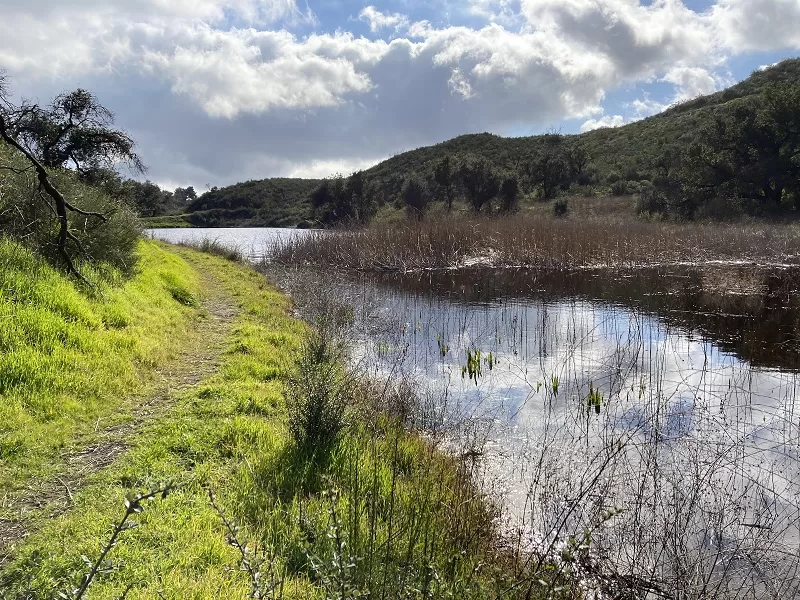
Western toads—especially males—return year after year to the water where they were hatched, drawn back by some internal compass. This makes them unusually vulnerable to habitat loss, and at risk for vehicle strikes. Slowing down on the road at night may save more than a passing toad. Amphibians of all species are increasingly at risk worldwide from pollution and climate change. In the Santa Monica Mountains, the Western toad has suffered catastrophic habitat loss and degradation in recent decades. Even in protected areas, they face human-made problems.
The most important thing we can all do to help protect toads and all native amphibians, is stay out of the water in local creeks, and make sure to cross on rocks or bridges in locations where hiking trails cross a creek.
I interviewed National Park Service Ecologist Katy Delany in 2019, during the last big year for toads. She’s an expert on amphibians and the lead ecologist in a program to re-introduce the locally extinct red-legged frog to the Santa Monica Mountains. She stressed the importance of staying out of creeks, streams and ponds, and not allowing dogs into the water.
“People love to hike up streams, but there’s a negative impact,” Delany explained. “It makes it harder for species like frogs and toads. It’s another stress on the ecosystem. If you love amphibians, stay out of their habitat.”
Young toads congregate on the edge of their stream or pond before dispersing. Adults spend most of their lives on land, only returning to the water to breed. Western toads tend to amble rather than hop, but they can hop if they are in a hurry. In some places Western toads dig a burrow to shelter in during hot or cold weather, but in the Santa Monica Mountains they are more likely to repurpose an old gopher hole.
Western toads are mostly nocturnal, but sometimes one can hear their birdlike peeping call during the day. It suggests the gentle squeaking of a hinge far more than the robust croaking traditionally associated with toads.
Toads are said to bring good luck, and that’s true for any gardener fortunate enough to have one in residence. This small amphibian is a dedicated insectivore that feasts on many of the species humans consider to be the worst garden pests. We can return the favor by making sure garden and construction runoff, fertilizer, and pet waste stay out of creeks and streams, helps safeguard all amphibians, and ensures that there will always be room for the Western toad in our local mountains.
